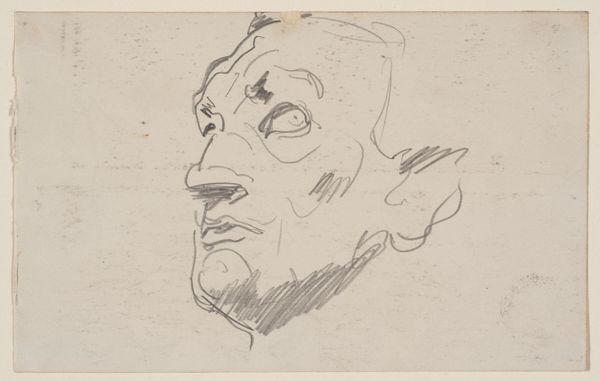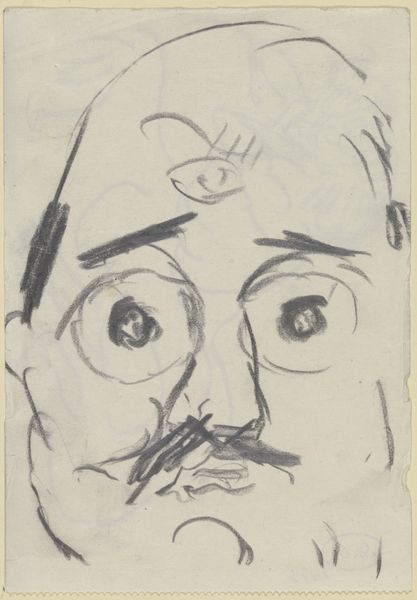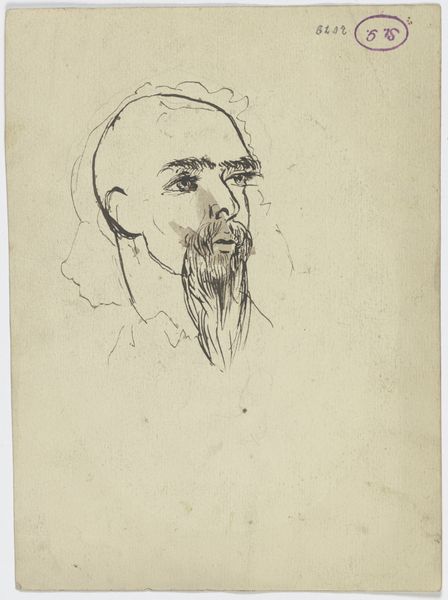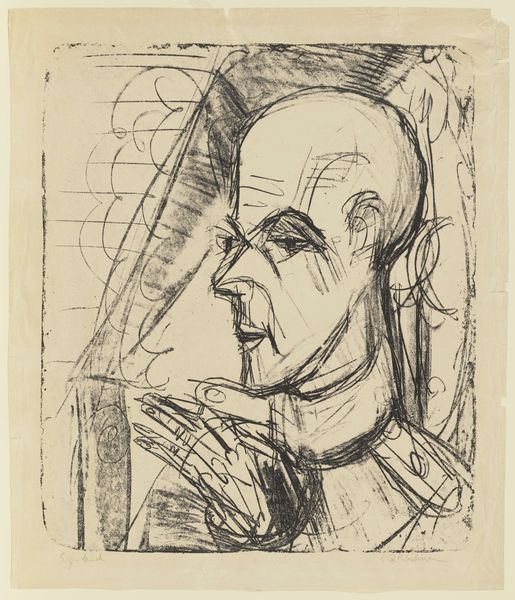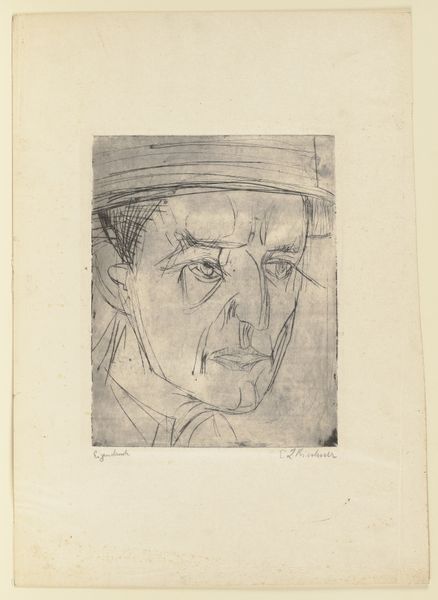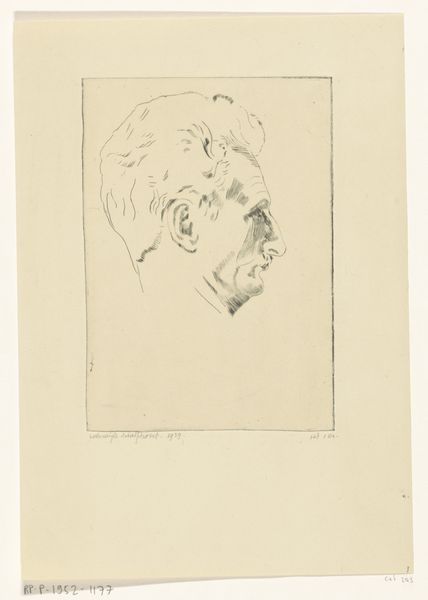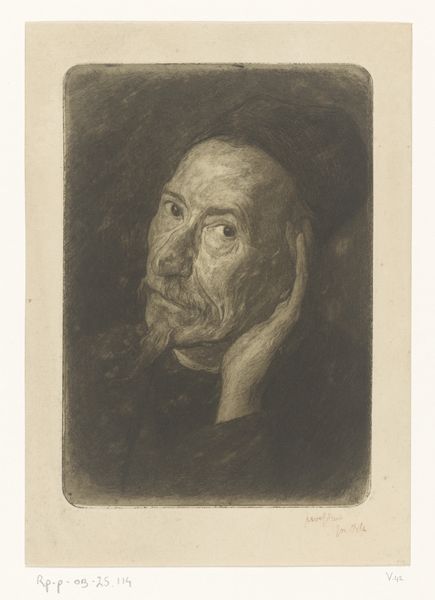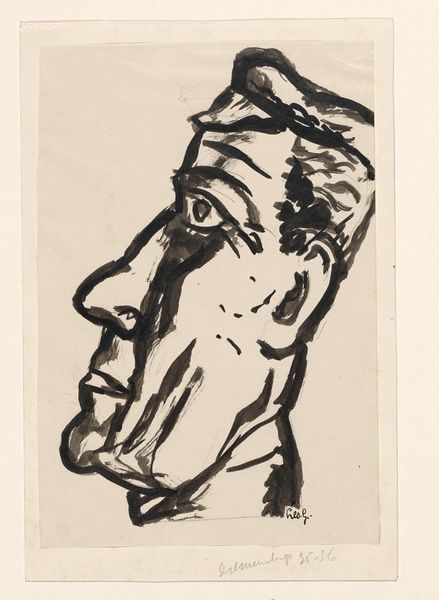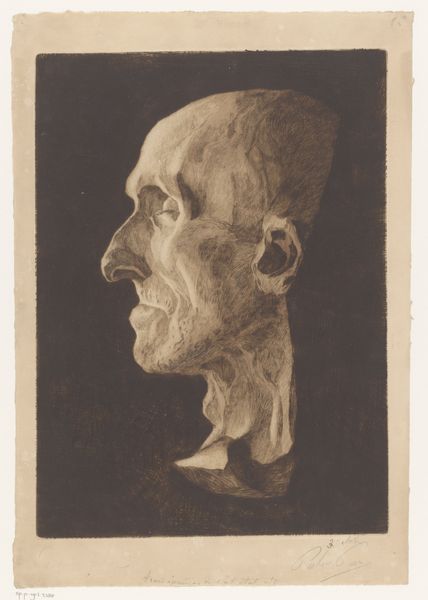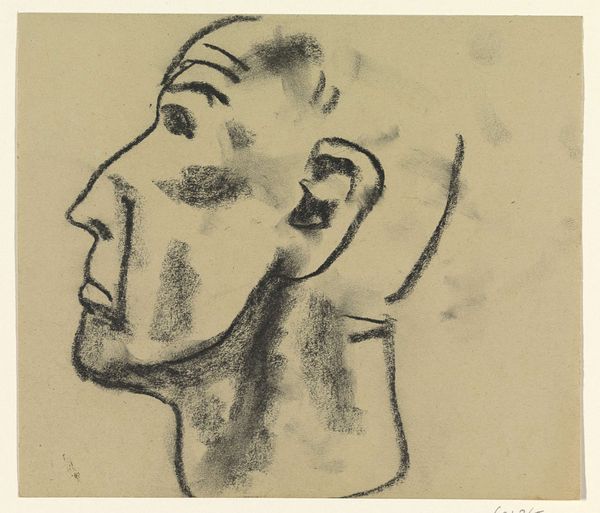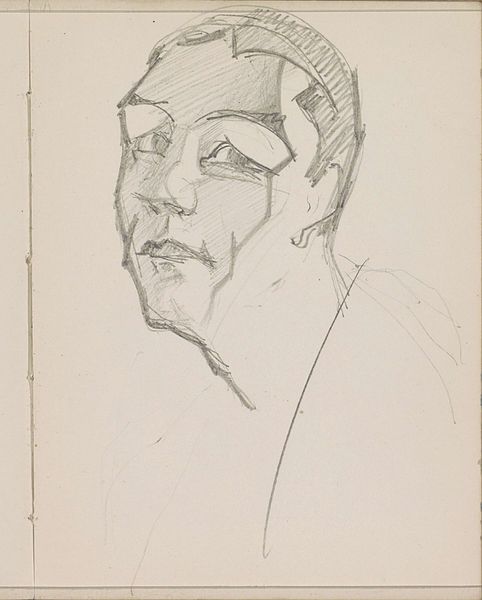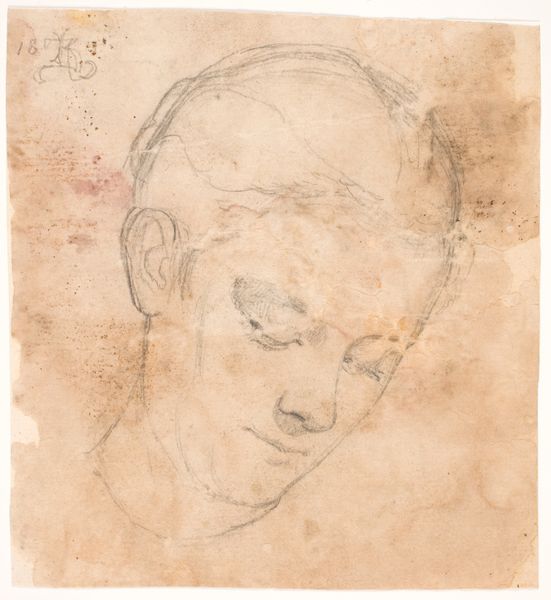
drawing, pencil, graphite
#
portrait
#
drawing
#
german-expressionism
#
pencil
#
expressionism
#
graphite
Copyright: Public Domain
Curator: Welcome. We’re standing before Ernst Ludwig Kirchner’s "Portrait Carl Hagemann," created between 1925 and 1926. It’s a graphite pencil drawing currently housed here at the Städel Museum. Editor: My immediate reaction is a sense of raw vulnerability. The lines are so sparse and shaky. The eyes are intensely focused but also convey a certain sadness. Curator: That rawness is very typical of Kirchner's expressionist style. It challenges traditional portraiture. Kirchner wasn't as concerned with photographic likeness but with conveying inner psychological states. The drawing was made after Kirchner voluntarily went to treat his mental health. The subject of the drawing, Carl Hagemann, had in fact helped and supported the artist. Editor: Absolutely, there's a profound dialogue happening here. Kirchner, grappling with the trauma of war and its aftermath, found some kind of solace in Hagemann, and the very visible effort in the pencil strokes speaks to that journey toward some kind of health. Curator: Indeed. We have to also contextualize this work within the sociopolitical climate of the Weimar Republic. Post-war Germany was experiencing tremendous social upheaval, moral crisis, and political polarization. Expressionists like Kirchner were trying to make sense of a world seemingly gone mad. It challenged viewers. Editor: And I think what strikes me most is how relevant it remains. Looking at this today, it feels like an invitation to embrace imperfection. It also reminds me of how people in need of mental health often find themselves in difficult situations and benefit from the empathy and assistance of other humans. This is a conversation we must continue to engage with openly, pushing against stigma, working on the politics of support. Curator: Agreed. Understanding this pencil drawing, considering not just its aesthetic qualities but also the sociohistorical currents flowing around its creation, makes this such a powerful reminder. Editor: It highlights how art can serve not just as an aesthetic object but also a tool for sparking change and inspiring compassion, showing different forms of masculinity outside what's commonly accepted.
Comments
No comments
Be the first to comment and join the conversation on the ultimate creative platform.
